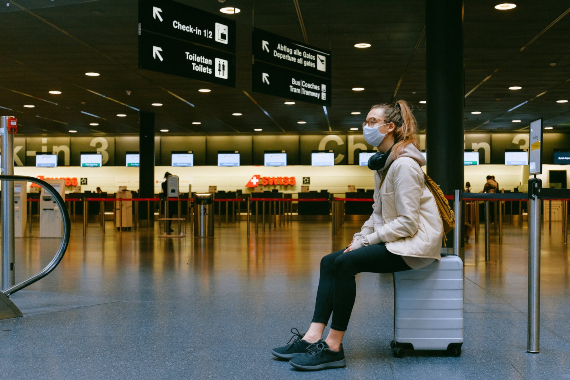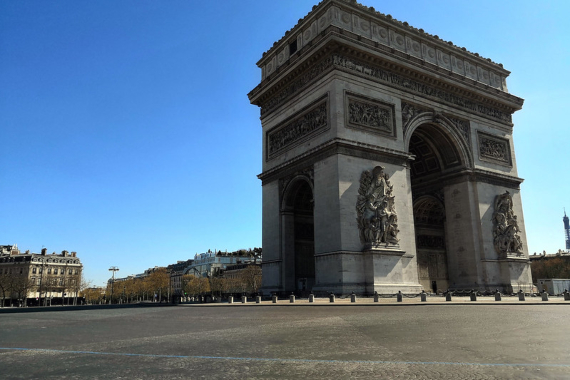Although experts have been warning us about the risk of a major pandemic for years, the truth is that only a few months ago no one could have imagined how a crisis like that of COVID-19 has been able to dramatically alter our world so quickly. Stories have proliferated in the media that draw comparisons to hitherto fictional scenarios, where a pandemic strikes the planet while a small group of survivors struggles to find safe haven; in London’s District One in the apocalyptic horror film 28 Weeks Later, we can even find an extreme version of our current confinements. But in real life and in the face of pandemics like this one, do any such safe havens actually exist?
In fact, researchers have sometimes relied on such examples from fiction to illustrate the spatial dynamics of a pandemic. In 2015, four physicists from Cornell University (USA) created a simulation of the spread of a zombie outbreak in the USA, with a tool available online so that any user could set the parameters and check how the infection would progress. With all the logical differences that exist between this fictitious example and a real epidemic, study co-author Chris Myers told this journalist at the time: “Perhaps by having laid at least a little of the groundwork regarding the dynamics and statistical mechanics of such invasions, we may contribute to its understanding.”

The work of the Cornell researchers made it clear where the safest refuges on the U.S. mainland were located: within a week, the infection was widespread across the country, but “even four months in, remote areas of Montana and Nevada remain zombie-free,” the authors wrote in their study, published in the journal Physical Review E. At the same time, the model showed that not only major cities, but especially metropolitan areas situated between several large urban centres, were fertile ground for the spread of the epidemic.
Solitary refuges and islands
It seems clear that the most depopulated regions, such as certain areas of the U.S. Midwest, are less at risk. “The safest place to be is somewhere where no other humans are,” University of Michigan epidemiologist Abram Wagner told OpenMind. The problem is that the solution does not seem optimal, since humans are not adapted to a life lived in solitude: “We are social animals and we need to be around others.” This is why the safety of such solitary refuges can be compromised over time, as is often the case in fiction. “In the current COVID-19 outbreak, some less densely populated areas haven’t been hit as hard yet, but that doesn’t mean they won’t be hit in the future,” warns Wagner. “For example, during the 1918 influenza outbreak, rural areas with Native Americans were also hard hit.”
An alternative possibility is those places separated by geographical barriers, and especially islands. This is the suggestion of Nick Wilson, an epidemiologist and public health expert at the University of Otago, New Zealand, who directed a study published in 2019 in the journal Risk Analysis that highlighted the advantage of island countries as safe havens against major pandemics. “It seems that our basic assumption that islands are better off for avoiding pandemic arrival has been supported by the COVID-19 pandemic experience,” Wilson told OpenMind.

Thus, the expert highlights the absence of contagion by the new coronavirus on islands that have maintained strict border controls and where flights have even been suspended, such as Vanuatu, Palau, American Samoa or Wallis and Futuna, among others; or the sporadic cases in New Caledonia, with no new infections in two weeks, or Fiji, with only one person infected in one week. On these islands, the epidemic is likely to be eradicated.
However, islands such as those mentioned are generally small territories with small populations. In contrast, Wilson’s work emphasized large island nations, without land borders but with populations of more than 250,000. The results indicated that the safest country of refuge was Australia, followed by New Zealand and Iceland. Here again, reality has not been too far off the mark, according to Wilson: “Larger island jurisdictions have had more cases, but are also on track to eliminate the virus within their boundaries.” For the epidemiologist, islands like Taiwan have been able to establish effective border controls and implement rigorous quarantine measures, “a key lesson for future pandemics.”
Make our cities safer
Despite all this, the reality is that the vast majority of human beings do not live on islands disconnected from the continents, nor do they probably have the option of withdrawing to one of them before an epidemic breaks out, much less to one of those tropical paradises where COVID-19 has not yet attacked. However, this does not mean that all is lost. On the website of the Canadian newspaper The Globe and Mail, columnist Doug Saunders stressed that the resources, infrastructure and organization to quell a major epidemic are found not so much in remote regions, but in large cities, which “remain our best hope for survival.”

So, perhaps it is a question of making our cities safer from the spread of infectious diseases, maintaining a certain distance and avoiding the concentration of crowds, designing spaces that can adapt to the response against epidemics, filtering the air in buildings or providing facilities that improve public hygiene, such as handwashing stations. Epidemiologists like Wagner are confident that the COVID-19 pandemic will “spur policies to increase the social safety net.”
But there are also steps we can take to ensure that our day-to-day surroundings are safer in the future, and these are in our hands (never better said): “I hope that there will be less hand shaking, which we should’ve long since dropped given the proclivity of people, in particular men, to not wash hands after going to the bathroom,” says Wagner. Staying at home whenever we are sick, or facilitating teleworking whenever possible in the future, are other changes that the epidemiologist sees as beneficial in making our societies safer from pandemics. In short, it is not a question of hoisting our backpacks onto our shoulders and, gun in hand, seeking the path to the fictitious and non-existent Arcadia in Resident Evil, but rather, as Wilson concludes, of “having pandemic plans that are flexible enough to address new pathogens.”
Comments on this publication